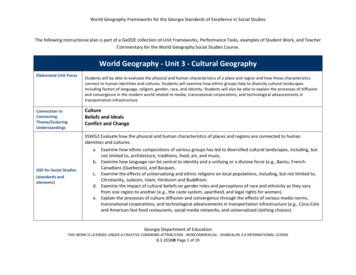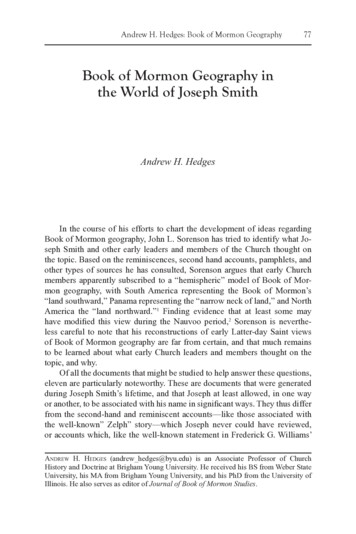
Transcription
Andrew H. Hedges: Book of Mormon Geography77Book of Mormon Geography inthe World of Joseph SmithAndrew H. HedgesIn the course of his efforts to chart the development of ideas regardingBook of Mormon geography, John L. Sorenson has tried to identify what Joseph Smith and other early leaders and members of the Church thought onthe topic. Based on the reminiscences, second hand accounts, pamphlets, andother types of sources he has consulted, Sorenson argues that early Churchmembers apparently subscribed to a “hemispheric” model of Book of Mormon geography, with South America representing the Book of Mormon’s“land southward,” Panama representing the “narrow neck of land,” and NorthAmerica the “land northward.”1 Finding evidence that at least some mayhave modified this view during the Nauvoo period,2 Sorenson is nevertheless careful to note that his reconstructions of early Latter-day Saint viewsof Book of Mormon geography are far from certain, and that much remainsto be learned about what early Church leaders and members thought on thetopic, and why.Of all the documents that might be studied to help answer these questions,eleven are particularly noteworthy. These are documents that were generatedduring Joseph Smith’s lifetime, and that Joseph at least allowed, in one wayor another, to be associated with his name in significant ways. They thus differfrom the second-hand and reminiscent accounts—like those associated withthe well-known” Zelph” story—which Joseph never could have reviewed,or accounts which, like the well-known statement in Frederick G. Williams’Andrew H. Hedges (andrew hedges@byu.edu) is an Associate Professor of ChurchHistory and Doctrine at Brigham Young University. He received his BS from Weber StateUniversity, his MA from Brigham Young University, and his PhD from the University ofIllinois. He also serves as editor of Journal of Book of Mormon Studies.
78Mormon Historical Studieshandwriting about Lehi landing in Chile, cannot clearly be linked to Joseph.3Five of these documents that carry Joseph’s name in some way are part of aseries of articles published in the Times and Seasons when Joseph was theeditor of the paper. Joseph’s 1839 history fits into this category as well, asdoes a letter of Oliver Cowdery originally published in the Latter Day Saints’Messenger and Advocate in 1834 and later incorporated into Joseph’s history. The remaining four documents are letters, the surviving copies of whichhave Joseph’s name appended as author. These include a 1833 letter to N.C. Saxton, editor of a newspaper in Rochester, New York; an 1834 letter toEmma, written while Joseph was traveling from Kirtland to Missouri withZion’s Camp; an 1841 letter to John Bernhisel regarding John L. Stephens’book Incidents of Travel in Central America, Chiapas, and Yucatan; and thefamous “Wentworth Letter” of 1842. While some of these sources treat Bookof Mormon geography in only the vaguest generalities, others make very specific claims on the topic.The purpose of this paper is to identify the general view or model of Bookof Mormon geography that emerges from a careful review of these elevendocuments. I do this not in an effort to identify Joseph’s particular views onthe topic (which I believe is impossible to determine; see below), but to betterunderstand the picture of Book of Mormon geography that was generated asJoseph and his close associates worked to fulfill his responsibilities as newspaper editor, correspondent, historian, and defender of the faith. A review ofthese documents also helps us understand what Church members were reading on the topic in Church-sponsored publications, where the most explicitof them were published. I argue that while these particular documents paint apicture of an extensive geography for Book of Mormon events, none of them,either separately or in the aggregate, necessarily suggest the fully hemisphericview of the book’s geography that Sorenson suggests most Church membersheld.4 Nor can any of them, or any combination of them, be interpreted to support the idea that the author(s), and perhaps Joseph Smith himself, necessarilyenvisioned a limited Mesoamerican geography for the book’s events, as JohnClark has recently suggested.5 At least one of them, in fact, clearly indicateson its own, without being viewed in the context of the others, a belief in a geography extending from Central America up into the Ohio River Valley. Thissame document and similar documents, written less than two years before Joseph’s death, may also require us to qualify Terryl Givens’ suggestion that the“efforts of Joseph and his brethren to identify Book of Mormon lands wouldincreasingly focus southward” over time.6 Rather than a hemispheric or limited geography, or some sort of development from one to the other, the view ofBook of Mormon geography contained in this particular subset of documentsis one that has Book of Mormon peoples, during at least part of their histories,
Andrew H. Hedges: Book of Mormon Geography79inhabiting parts (although not necessarily all) of the eastern United States; thefinal battles of the Nephites and Jaredites taking place in upstate New York;and the centers for both the Nephite and Jaredite civilizations being locatedsomewhere in Central America. South America is largely, if not completely,out of the picture, while sites thousands of miles apart in Central and NorthAmerica are very much in.In limiting this analysis to documents associated with Joseph Smith as acorrespondent, newspaper editor, historian, and champion of Mormonism, itshould be clear that I am not attempting to identify the range of ideas earlymembers of the Church may have entertained about Book of Mormon geography. Nor does the view of geography that emerges from these sources necessarily represent any specific individual’s private views of the topic, or suggestthat all those who helped produce and record these particular documents necessarily subscribed to the picture of Book of Mormon geography that emergesfrom the documents in the aggregate. And it must be emphasized that I am notattempting to identify Joseph’s own ideas regarding Book of Mormon geography. In spite of their connections to the Prophet (which will be discussed inthe text and notes), none of these documents are reliable guides to understanding Joseph’s innermost thoughts—if he even had such thoughts—about Bookof Mormon geography. This applies even to the letters, the original of onlyone of which—the one addressed to Bernhisel—is around today. Only copiessurvive of the others. None contains a holographic signature of Joseph Smith.Even the “Joseph Smith” signature on the original letter to Bernhisel waswritten by Joseph’s amanuensis, who in this case was John Taylor. Given thenature of these letters as we have them today, we must be open to the distinctpossibility that Joseph, in “dictating” or even “writing” these letters, gave hisscribe general instructions regarding their contents (or some parts of them),and that the precise wording of the letters was not Joseph Smith’s. This, inturn, would have a bearing on their possible implications regarding Joseph’sown thoughts. In the absence of any holographic material from Joseph, or aclear understanding about how each letter and document was generated andreviewed, the most that we can safely conclude is that Joseph allowed hisname to be attached to them without later offering any sort of correction tothem. Whether he completely agreed with everything they contained or not isimpossible to say.Ambiguous Texts: Indians and the American ContinentSeveral of these documents initially appear to support the idea that Bookof Mormon events took place almost wholly within the current borders of
80Mormon Historical Studiesthe United States. The1833 letter addressed to N. C. Saxton,7 for example,identifies the Book of Mormon as “a record of the forefathers of our westernTribes of Indians. . . . By it we learn that our western tribes of Indians are descendants from that Joseph who was sold into Egypt, and the land of Americais a promised land unto them.”8 The 1839 history9 has Moroni telling Josephthat “there was a book deposited written upon gold plates, giving an accountof the former inhabitants of this continent and the source from whence theysprang.”10 Even more clearly, perhaps, is the famous “Wentworth Letter” of1842,11 which explained how Moroni had taught Joseph “concerning the aboriginal inhabitants of this country,” and how, in the Book of Mormon, “thehistory of ancient America” unfolds. “America in ancient times was inhabitedby two distinct races of people,” the letter continues, the “remnant” of the second race constituting “the Indians that now inhabit this country.” Retaining theNorth American-sounding orientation to the end, this part of the letter closesby noting that “our Saviour made his appearance upon this continent after hisresurrection, [and] that he planted the gospel here in all its fulness.”12To think, however, that the phrase “this continent” in these documentsnecessarily meant “North America” to early nineteenth century Americans, orthat “America” or “this country” meant the “United States,” would be a mistake. Nor would those reading these documents necessarily have understood“Indian” as many do today. For Joseph and his contemporaries, “continent”typically meant “a great extent of land, not disjoined or interrupted by a sea;a connected tract of land of great extent; as the Eastern and Western continent.”13 In at least one of the letters cited above, in fact, “this continent” is indeed juxtaposed with “the eastern continent,” reflecting this hemispheric approach to the word rather than the more narrow definition most people wouldgive it today.14 Similarly, “America,” was considered “one of the great continents, . . . extend[ing] from the eightieth degree of North, to the fifty-fourthdegree of South Latitude”—that is, all of North and South America combined.True, “[f]rom Darien to the North, the continent [was] called North America,and to the South, it [was] called South America,” but the singular noun makesit clear that “America” alone included everything from Point Barrow to theCape of Good Hope.15 “Country,” too, carried the same ambiguity, which explains how either Joseph or John Taylor, writing from Nauvoo in 1841, couldpraise John Lloyd Stephens’ book on Central American ruins as “the most correct luminous & comprihensive . . . of all the histories that have been writtenpertaining to the antiquities of this country.”16 “Indian,” defined as “any nativeof the American continent,” incorporated the imprecision already inherent in“continent” and “America.”17 Even the phrase “our western tribes of Indians”does little to clear things up, given how broadly “west” and “western” were,and continue to be, used.
Andrew H. Hedges: Book of Mormon Geography81The Plains of the Nephites and the Hill CumorahThe documents cited above, all of which were associated with Joseph’sname in one way or another, were simply conveying the idea that the eventsin the Book of Mormon took place somewhere in the New World, and that thedescendants of Book of Mormon peoples were still around. On other occasions, however, documents produced and recorded in the course of Joseph’sactivities made far more specific claims. One of the earliest was a letter written to Joseph’s wife Emma from Pike County, Illinois, “On the banks of theMississippi,” while Joseph and others were traveling to Missouri with Zion’sCamp.18 In it, the author(s) explained for Emma how the camp has been “wandering over the plains of the Nephites, recounting occasionaly the history ofthe Book of Mormon, roving over the mounds of that once beloved peopleof the Lord, picking up their skulls & their bones, as a proof of its divineauthenticity.”19 While this statement says nothing specific about the extent ofNephite settlement, or about the specific area over which Zion’s Camp hadbeen wandering that reminded at least some of its members of the Book ofMormon, or at what point in their thousand year history the Nephites werebelieved to have been in this area, it appears to show a connection in theminds of some, as of summer1834 at least, between Book of Mormon history,Nephites, and a site in eastern North America.The views expressed in this 1834 letter dovetail nicely with the contentsof a letter Oliver Cowdery, then living in Kirtland, published in the July 1835Latter Day Saints’ Messenger and Advocate. Addressed to W. W. Phelps, whowas then in Missouri, the letter was the seventh in a series of letters Cowderyhad been writing since September 1834, whose purpose was to provide Phelps,and the Church at large, with “a full history of the rise of the Church of theLatter Day Saints.”20 Oliver made it clear at the beginning of his series of letters that Joseph himself was involved with their production. “That our narrative may be correct, and particularly the introduction,” he wrote, “it is properto inform our patrons, that our brother J. SMITH jr. has offered to assist us.Indeed, there are many items connected with the fore part of this subject [thehistory of the church] that render his labor indispensible. With his labor andwith authentic documents now in our possession, we hope to render this apleasing and agreeable narrative.”21 This letter was later copied into the “largejournal” in which Joseph was keeping the history of the Church,22 after whichit was republished in the Times and Seasons.23Prone to pontificate as much as narrate, Cowdery was still in the “fore partof this subject” by letter no. 7, which discussed Moroni’s September 1823 appearance to Joseph and the latter’s first visit to the hill to see the plates.24 Having described for his readers the “large hill on the east side” of the mail road
82Mormon Historical Studiesfrom Palmyra to Canandaigua, Cowdery goes on to describe “another ridge,of lesser height, running parallel with the former” about one mile to the west,“leaving a beautiful vale between” the two ridges. The vale’s significance, hecontinues, lay in “the fact, that here, between these hills, the entire power andnational strength of both the Jaredites and Nephites were destroyed.”By turning to . . . the book of Mormon, you will read Mormon’s account of the lastgreat struggle of his people, as they were encamped round this hill Cumorah. . . .In this valley fell the remaining strength and pride of a once powerful people, theNephites. . . . From the top of this hill, Mormon . . . gazed with horror upon themangled remains [of his people]. . . . This hill, by the Jaredites, was called Ramah: byit, or around it, pitched the famous army of Coriantumr. . . . The opposing army wereto the west, and in this same valley, and near by, from day to day, did the mighty racespill their blood. . . . From this same spot, in full view from the top of this same hill,one may gaze with astonishment upon the ground which was twice covered with thedead and dying of our fellowmen.It was “in this same hill, Cumorah,” Oliver also writes, where Mormondeposited “all the records” of the Nephites.25This letter from Oliver goes even further than the 1834 letter to Emma inmaking a connection between a site in the eastern United States and the Bookof Mormon. Where the letter to Emma stopped short of trying to identify, onthe ground, any specific sites mentioned in the Book of Mormon, Oliver didnot—according to him, the Hill Cumorah where Joseph found the plates isthe same hill Cumorah that figures so prominently in the Nephite narrative.Oliver says nothing, however, about the extent of Nephite lands or settlement,or where their civilization may have been centered.Stephens’ Incidents of Travel and the Times and SeasonsNot until November 1841 did a statement associated with Joseph Smithappear that would have implications for these issues. Earlier in the year,John L. Stephens had published his two-volume Incidents of Travel in Central America, Chiapas, and Yucatan.26 In vividly describing numerous andextensive pre-Columbian ruins in Central America, Stephens destroyed theprevailing early-nineteenth-century view that ancient American societies hadnever achieved a level of sophistication or civilization comparable to those ofMediterranean or Near Eastern societies of the same period. In the process,he also provided the first empirical evidence most Latter-day Saints, and mostAmericans for that matter, had seen for the existence of an ancient Americancivilization as complex and advanced as that portrayed in the Book of Mor-
Andrew H. Hedges: Book of Mormon Geography83mon. A letter from Joseph to John Bernhisel, who had sent the prophet copiesof Stephens’ books earlier, made the connection explicit:I have read the volumes with the greatest interest & pleasure & must say that of allhistories that have been written pertaining to the antiquities of this country it is themost correct luminous & comprihensive. . . . to me [it] is the more interesting as itunfolds & developes many things that are of great importance to this generation &corresponds with & supports the testimony of the Book of Mormon.27In spite of the letter’s obvious endorsement of Stephens’ work, it is unclear what the author or authors intended when they wrote that it “correspondswith & supports” the Book of Mormon. While it could be taken to mean thatthey saw a direct link between the buildings, plazas, and courtyards Stephensfound and the evidence for urbanization contained in the Book of Mormon, itcould also be interpreted to mean that they saw Stephens’ discoveries as onlyan example of what ancient Americans were capable of doing, and that theywere not actually linking, in a specific sense, sites in Central America withBook of Mormon sites.This November 1841 letter was followed over the course of the next twoyears by a series of editorials and articles in the Times and Seasons on thetopic of Book of Mormon geography. While the first was published whenEbenezer Robinson was editor,28 and the last few under the editorship of JohnTaylor,29 six were published when Joseph Smith was editor.30 Like the earlierletter to Bernhisel, several of these articles mention Stephens’ findings; unlike the Bernhisel letter, however, some make very clear claims about wherespecific Book of Mormon sites are located in the real world.The last three articles (those of September 15 and October 1) make themost dramatic claims, and have received the most attention from scholars.The first of these follows a lengthy extract from Stephens’ work and makesexplicit the connection between his discoveries in Central America and thesetting for the Book of Mormon:The foregoing extract has been made to assist the Latter-Day Saints, in establishingthe Book of Mormon as a revelation from God. . . . These wonderful ruins of Palenqueare among mighty works of the Nephites. . . . They lived about the narrow neck ofland, which now embraces Central America, with all the cities that can be found.31This is followed a few pages later, in the same issue of the paper, with asecond article, whose main point was to match the Book of Mormon with atradition Stephens recounts about members of the House of Israel fleeing tothe Americas. While building up to his point, the author or authors revealedtheir thoughts about what constituted the “narrow neck of land” by noting
84Mormon Historical Studieshow “Lehi. . . crossed over to this land, and landed a little south of the Isthmusof Darien [Panama].”32The following issue continued the theme, making an explicit connectionbetween Central America and a specific Book of Mormon site:Since our ‘Extract’ was published from Mr. Stephens’ ‘Incidents of Travel’ &c., wehave found another important fact relating to the truth of the Book of Mormon. CentralAmerica, or Guatimala, is situated north of the Isthmus of Darien and once embracedseveral hundred miles of territory from north to south.–The city of Zarahemla . . .stood upon this land. . . . The ruins of Zarahemla have been found where the Nephitesleft them. . . . We are not going to declare positively that the ruins of Quirigua arethose of Zarahemla, but when the land and the stones, and the books tell the story soplain, we are of opinion, that it would require more proof than the Jews could bring toprove the disciples stole the body of Jesus from the tomb, to prove that the ruins of thecity in question, are not one of those referred to in the Book of Mormon.33These articles clearly place Zarahemla and other (unnamed) Nephite urban areas in Central America. The possibility of South America proper havinganything to do with the Book of Mormon is implied only in the brief mentionof Lehi and his party landing “a little south” of Panama, while nothing is mentioned about the role places north of Central America might or might not haveplayed in Book of Mormon history—that is, the articles are completely openended on that score. Opinions on this last question, however, are abundantlysupplied in two of the other three articles on Book of Mormon geographypublished under Joseph’s name as editor.34 The first of these—that of May 2,1842—followed a brief article extracted from Josiah Priest’s American Antiquities entitled “A Catacomb of Mummies Found in Kentucky.”35 The articleconcluded with a “Mr. Ash” confessing “the deepest ignorance” about “howthese bodies were embalmed, how long preserved, by what nations, and fromwhat people descended.”36 “Had Mr. Ash in his researches consulted the Bookof Mormon,” wrote the “ED.” of the Times and Seasons, “his problem wouldhave been solved. . . . The Book of Mormon gives an account of a number ofthe descendants of Israel coming to this continent,” some of whom, he contended, were familiar through their contact with the Egyptians with the art ofembalming. “This art was no doubt transmitted from Jerusalem to this continent, by the before mentioned emigrants, which accounts for the finding of themummies, and at the same time is another strong evidence of the authenticityof the Book of Mormon.”37The July 15, 1842, editorial similarly followed more extracts from Priest’sbook, in which various burial mounds, figurines, copper and iron objects, fortifications, weapons, and other evidences “that this country was once peopledwith civilized, industrious nations” are described.38 The sites in question arein Ohio, Tennessee, and Mississippi.39 After quoting a few passages from 1
Andrew H. Hedges: Book of Mormon Geography85and 2 Nephi and the Book of Ether which seem to parallel and explain thefinds, the editorial suggested that “if men, in their researches into the historyof this country, in noticing the mounds, fortifications, statues, architecture,implements of war, of husbandry, and ornaments of silver, brass, &c.-were toexamine the Book of Mormon . . . they would find that those things that theyare anxiously prying into were matters of history, unfolded in that book.”They would find . . . that a great and a mighty people had inhabited this continent–thatthe arts sciences and religion, had prevailed to a very great extent, and that there wasas great and mighty cities on this continent as on the continent of Asia. . . . Stephensand Cather-wood’s researches in Central America abundantly testify of this thing.The stupendous ruins, the elegant sculpture, and the magnificence of the ruins ofGuatamala, and other cities, corroborates this statement. . . . Their ruins speak of theirgreatness; the Book of Mormon unfolds their history.40More than any other single document associated with Joseph’s name, thislast editorial—published less than two years before Joseph’s death—clearlyshows that its author(s) believed archaeological remains found at specific sitesin the eastern United States to be “matters of history, unfolded in [the Bookof Mormon],” just as the Central American sites were—that is, that Book ofMormon history played itself out in both areas. Stephens’ impressive discoveries may have expanded Joseph’s and his associates’ view of Book of Mormon geography, but they clearly did not cause them to abandon earlier ideasthey appear to have entertained about at least some Book of Mormon eventstaking place in the Eastern United States.ConclusionThe documents reviewed in this paper suggest an understanding of Bookof Mormon geography lying somewhere between a fully hemispheric model,on the one hand, and a limited model on the other. According to this view,which we might dub a “limited hemispheric” or “northern hemispheric” view,Book of Mormon peoples, during at least part of their histories, inhabited parts(although not necessarily all) of the eastern United States; the final battles ofthe Nephites and Jaredites took place in upstate New York; and the centers forboth the Nephite and Jaredite civilizations were located somewhere in CentralAmerica. South America appears only once—barely—in a reference to Lehiand his party landing “a little south” of Panama. While none of the documents,alone, contains all the elements of this view, none are at odds with it—that is,each is consistent with the larger view that emerges when all are consideredtogether.
86Mormon Historical StudiesWhether any single individual(s), including Joseph Smith, actually subscribed to this view is impossible to say, as it is fully developed only whencomparing documents produced over the course of several years with the helpof several people. Through these documents’ common association with Joseph Smith’s name, however, and the wide dissemination of their most explicit claims through Church-sponsored publications, they suggest a possiblecorrective to claims that early Church members widely subscribed to a fullyhemispheric model of Book of Mormon geography, and that Joseph and hisassociates eventually came to believe in a limited Mesoamerican geographyfor Book of Mormon events. These documents also suggest that Joseph’s andhis associates’ growing interest in Central America over time represented anexpansion of their view of Book of Mormon geography rather than a fundamental shift in their focus.Notes1. John L. Sorenson, The Geography of Book of Mormon Events: A Source Book (Provo, Utah: The Foundation for Ancient Research and Mormon Studies, 1992), 9-11, 75-76.2. Sorenson, Geography of Book of Mormon Events, 11-12; 188-89.3. For a discussion of the documents surrounding Zelph, see Kenneth W. Godfrey,“The Zelph Story,” BYU Studies 29, no. 2, (Spring 1989): 31-56; and Kenneth W. Godfrey,“What is the Significance of Zelph in the Study of Book of Mormon Geography?” Journalof Book of Mormon Studies 8, no. 2 (1999): 71-79. For an analysis of the Frederick G. Williams statement, see Frederick G. Williams III, “Did Lehi Land in Chile? An Assessment ofthe Frederick G. Williams Statement” (Provo, Utah: The Foundation for Ancient Researchand Mormon Studies, 1988).4. Sorenson, Geography of Book of Mormon Events, 9-11.5. John E. Clark, “Archaeological Trends and Book of Mormon Origins,” in JohnW. Welch, ed., The Worlds of Joseph Smith: A Bicentennial Conference at the Library ofCongress, BYU Studies 44, no. 4 (2005): 85-86, 100-01, n9.6. Terryl L. Givens, By the Hand of Mormon: The American Scripture that Launcheda New World Religion (Oxford, New York: Oxford University Press, 2002), 99.7. This letter exists today as an entry in Joseph Smith Letterbook 1, written in Frederick G. Williams’ handwriting. The phrase “I cheerfully take up my pen” in the openingparagraph is evidence that Joseph may have written the original himself, although he mayalso have been speaking in a more metaphorical sense. The copy is signed “Joseph SmithJr” in Williams’ handwriting. See Dean C. Jessee, compiler and editor, Personal Writingsof Joseph Smith, rev. ed. (Salt Lake City and Provo: Deseret Book and Brigham YoungUniversity Press, 2002), 294-95, 298.8. Jessee, Personal Writings of Joseph Smith, 297. According to his journal, similarly,Joseph told a visitor almost three years later that “the Indians were the literal descendantsof Abraham.” Dean C. Jessee, ed. The Papers of Joseph Smith, 2 vols. (Salt Lake City:Deseret Book, 1989-1992), 2:70.9. According to Joseph’s journal, kept by George W. Robinson at the time, this historywas originally written “by the first Presidency” and Robinson himself between April 27
Andrew H. Hedges: Book of Mormon Geography87and May 4, 1838. See Jesse, Papers of Joseph Smith, 2:233-37; 1:230. The version quotedhere was apparently “dictated,” in some fashion, by Joseph to James Mulholland beginningJune 11, 1839. Jessee, Papers of Joseph Smith, 1:267.10. Jessee, Papers of Joseph Smith, 1:278.11. No manuscript of the “Wentworth Letter,” and no record of how it was produced,have been found. It was published in the March 1, 1842, issue of the Times and Seasons,the first issue of the paper published under Joseph’s tenure as editor. Joseph’s journal indicates that he “Read the Proof” of this issue of the paper on March 2, 1842. Jessee, Papersof Joseph Smith, 2:364. Although written in the first person and bearing the name JOSEPHSMITH at the bottom, it is clearly based on at least one earlier document—Orson Pratt’spamphlet An Interesting Account of Several Remarkable Visions, and of The Late Discovery of Ancient American Records (Edinburgh, 1840).12. Jessee, Personal Writings of Joseph Smith, 243-44. These statements were included in a letter from Joseph to I. Daniel Rupp the following year, which Rupp published in1844 in his book An Original History of the Religious Denominations at Present Existingin the United States. After receiving a copy, Joseph had a letter sent to Rupp in June 1844thanking him “for so valuable a treasure,” and praising him for “the design, the propriety,the wisdom of letting every sect tell its own story.” Jessee, Papers of Joseph Smith, 1:44951.13. See Noah Webster, An American Dictionary of the English Language (New York:S. Converse, 1828), s.v. “Continent.”14.
Apr 05, 2013 · Book of Mormon Geography in the World of Joseph Smith Andrew H. Hedges In the course of his efforts to chart the development of ideas regarding Book of Mormon geography, John L. Sorenson has tried to identify what Jo-seph Smith and

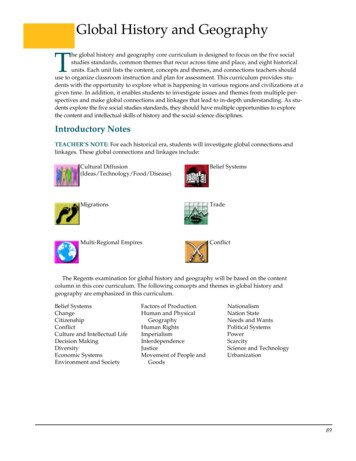
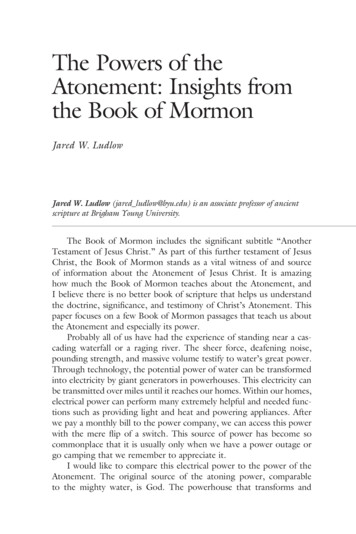
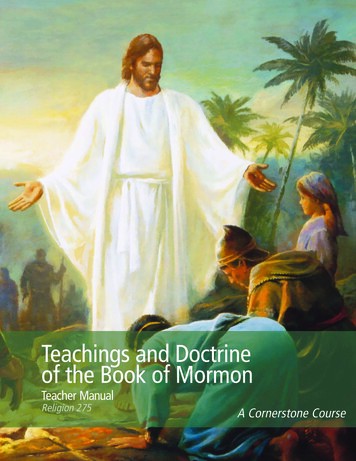
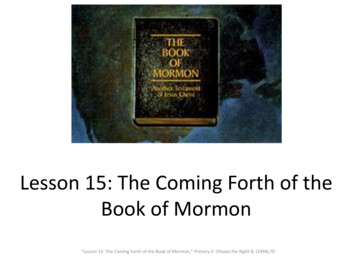
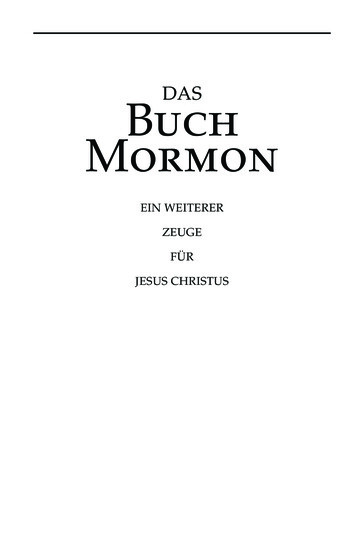
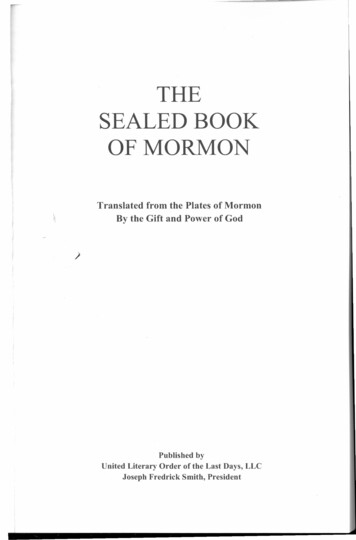
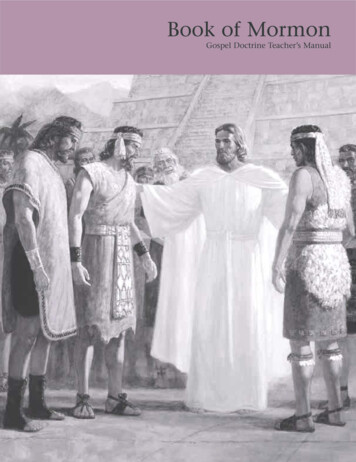
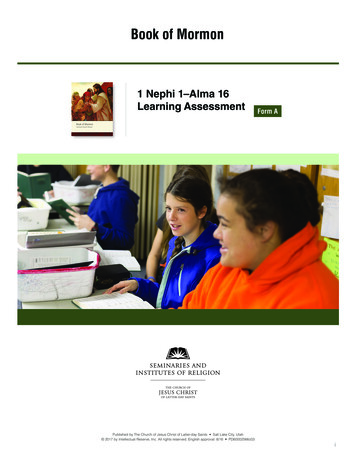
![What's in a Name? Book of Mormon Language, Names, and [Metonymic] Naming](/img/33/whats-in-a-name-book-of-mormon-language-names-and-metonymic.jpg)
